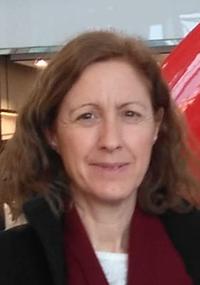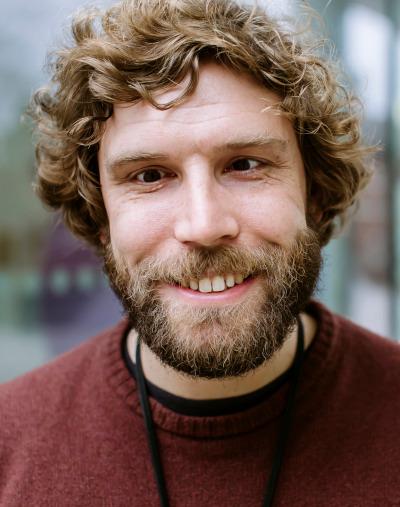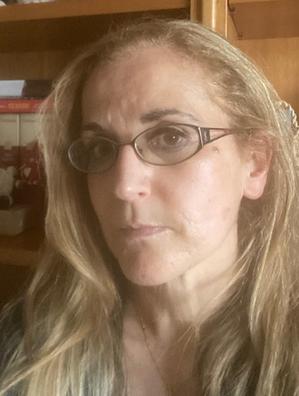Teaching With Astronomy Exhibits
Parallel Session
3rd Shaw-IAU Workshop on Astronomy for Education
Session timeblocks
Wednesday Oct. 13, 2021
UTC: 3:30 p.m. -
5 p.m.
Thursday Oct. 14, 2021
UTC: 6 a.m. -
7:30 a.m.
Schedule
-
Engaging through DIY workshops to discover scientific principles and high-tech applications.
Wednesday Oct. 13, 2021
UTC: 3:30 p.m. - 3:40 p.m.Thursday Oct. 14, 2021
UTC: 6 a.m. - 6:10 a.m.Effective learning relies on the involvement of as many senses as possible and a positive learning environment. ESO Supernova Planetarium & Visitor Centre, of the European Southern Observatory (ESO), is in high demand as an out-of-school learning location offering a varied education programme. In this talk, IŐll explain how we engage students with the discovery of curriculum-related physical principles through hands-on workshops that make use of low-cost materials and easy to make, portable setups. With the example of our Telescope workshop, IŐll illustrate how both basic scientific principles and applications of modern engineering, e.g. for the Extremely Large Telescope of ESO, can be investigated by the students.

Wolfgang Vieser (European Southern Observatory)
For more information about this talk click here
-
Spacetime Simulator
Wednesday Oct. 13, 2021
UTC: 3:40 p.m. - 3:50 p.m.Thursday Oct. 14, 2021
UTC: 6:10 a.m. - 6:20 a.m.In 1915, Albert Einstein published his celebrated “The General Theory of Relativity,” the concept of curved space and warped time caused by the mass of an object was only within the grasp of professional physicists and well out of reach for the everyday layperson or school student. Using simple construction materials and methods, the “SpaceTime Simulator” (STS) has changed that by giving the teacher and student the ability to observe a “simplified” version of Einstein’s four-dimensional Spacetime. Using different mass spheres, the STS can now demonstrate and observe how objects are affected by the curved geometry caused by the mass of objects. A number of demonstrations can be performed utilising Space Time Simulator (STS). From demonstrating how a photon of light travels in a straight line with no mass present to how matter is “spaghettified” by the gravitational interactions of a simulated Black Hole.

Rick Tonello (Gravity Discovery Centre)
For more information about this talk click here
-
Designing astronomy exhibition to support outdoor education for school.
Wednesday Oct. 13, 2021
UTC: 3:50 p.m. - 4 p.m.Thursday Oct. 14, 2021
UTC: 6:20 a.m. - 6:30 a.m.The astronomy exhibitions in Thailand were designed with the contents related to the basic education core curriculum in mind. The exhibitions feature interaction both via the use of technology and more traditional means to provide a better experience for the audience. The audience are encouraged to experience and promote inquiry to further explore the exhibits. The exhibition is produced in-house, therefore, visitors can easily deliver ideas of the exhibited equipment to apply with their activities in classroom. Our exhibition values lifelong learning and teaching, curiosity and inquiry, iteration and evidence, integrity and authenticity for sustainability. Examples of exhibition zones such as moon phases, scattering of light, and proof of the Earth's rotation by using the pendulum, etc.

Farprakay Jiarakoopt (National Astronomical Research Institute of Thailand (NARIT))
Coauthors: Suparerk Karuehanon (NARIT), Thanakrit Santikunaporn (NARIT)
For more information about this talk click here
-
Astronomy through interactive exhibits
Wednesday Oct. 13, 2021
UTC: 4 p.m. - 4:10 p.m.Thursday Oct. 14, 2021
UTC: 6:30 a.m. - 6:40 a.m.Teaching astronomy requires a platform which is different from the conventional blackboard technique. In this talk I would like to show some of the tools I utilised to explain the concepts like Lagrangian points (for Trojan asteroids) the duration of the day on different planets (especially Mercury), the difference between the phases of a moon through the month and during lunar eclipse and many more. A demonstrative exhibition called “Science in Action” which generally covers physics and chemistry was conducted with 20 such exhibits and attracted over 2000 visitors. All these exhibits will be discussed

Shylaja B S (Jawaharlal Nehru Planetarium, Bengaluru, India)
For more information about this talk click here
-
3D planetary tactile globes for the “Inspiring Stars” exhibition
Wednesday Oct. 13, 2021
UTC: 4:10 p.m. - 4:20 p.m.Thursday Oct. 14, 2021
UTC: 6:40 a.m. - 6:50 a.m.One of the exhibitions created for the 100th anniversary of the IAU in 2019 was ŇInspiring StarsÓ, an exhibit with the goal of showcasing examples of inclusion in astronomy. Our contribution to this project was a set of tactile 3D globes of the terrestrial planets and the Moon. They were specially designed to allow persons with visual impairments (BVI) explore by themselves the most relevant features of these celestial bodies. Initially the design and creation of the globes involved complex, but we eventually developed a software capable to produce efficiently 3D digital tactile models from 2D maps. All the models, the software to make them and a couple of activity books are available for downloading at the projectŐs website: ŇA Touch of the UniverseÓ (https://www.uv.es/astrokit/).

Amelia Ortiz Gil (University of Valencia Astronomical Observatory)
For more information about this talk click here
-
The Tactile Universe: Accessible astrophysics public engagement with the vision impaired community
Wednesday Oct. 13, 2021
UTC: 4:20 p.m. - 4:40 p.m.Thursday Oct. 14, 2021
UTC: 6:50 a.m. - 7:10 a.m.Astronomy is a topic that engages and inspires a wide range of audiences around the world, but blind and vision impaired people can often find it difficult to engage with the subject due to its very visual nature. The Tactile Universe is an award winning public engagement project based at the University of Portsmouth which is opening up current topics in astrophysics research to blind and vision impaired people through accessible tactile resources based on real data. We will discuss how involving the vision impaired community in the development of these resources has made them truly unique and versatile.

Nicolas Bonne (Institute of Cosmology and Gravitation, University of Portsmouth)
For more information about this talk click here
-
Discussion Panel: Teaching with Astronomy Exhibits
Wednesday Oct. 13, 2021UTC: 4:40 p.m. - 5 p.m.
Thursday Oct. 14, 2021
UTC: 7:10 a.m. - 7:30 a.m.Chair:

Giuliana Giobbi

Renate Hubele
Panel: Shylaja B S
(Jawaharlal Nehru Planetarium, Bengaluru, India), Nicolas Bonne
(Institute of Cosmology and Gravitation, University of Portsmouth), Farprakay Jiarakoopt
(National Astronomical Research Institute of Thailand (NARIT)), Amelia Ortiz Gil
(University of Valencia Astronomical Observatory), Rick Tonello
(Gravity Discovery Centre), Wolfgang Vieser
(European Southern Observatory)
Posters
-
Astronomy Teaching Aids
Sitaram Bettadpur (Director, Zeal Educational Services Pvt. Ltd.)
I will be presenting my collection of Astronomy teaching aids. These include the sunrise locator, sunrise timer, sub-solar point model, seasons models, moon phase calculator, constellation charts, guess the constellation, etc. All these are actual hands-on models, not computer apps and can be easily assembled by students. As an example, the sunrise locator and timer shows you the location and time of sunrise/set at any latitude on any day of the year!
-
Starry Starry Night
Tan Jyh Harng (Science Center Board Singapore)
Constellations are excellent stepping stones for young children when they begin learning astronomy. It is common pedagogy involving storytelling when it comes to learning. Constellations have rich stories behind them which makes them easy to teach children. From there, it is easy to link up to other areas as well, such as the names of the major stars and also seasons as well. In this exhibit and activity, a star chart is made with sticks representing as stars and rubber bands as the imaginary connecting constellation lines. Children can practice remembering the constellations by 'connecting the lines' using the rubber bands.




